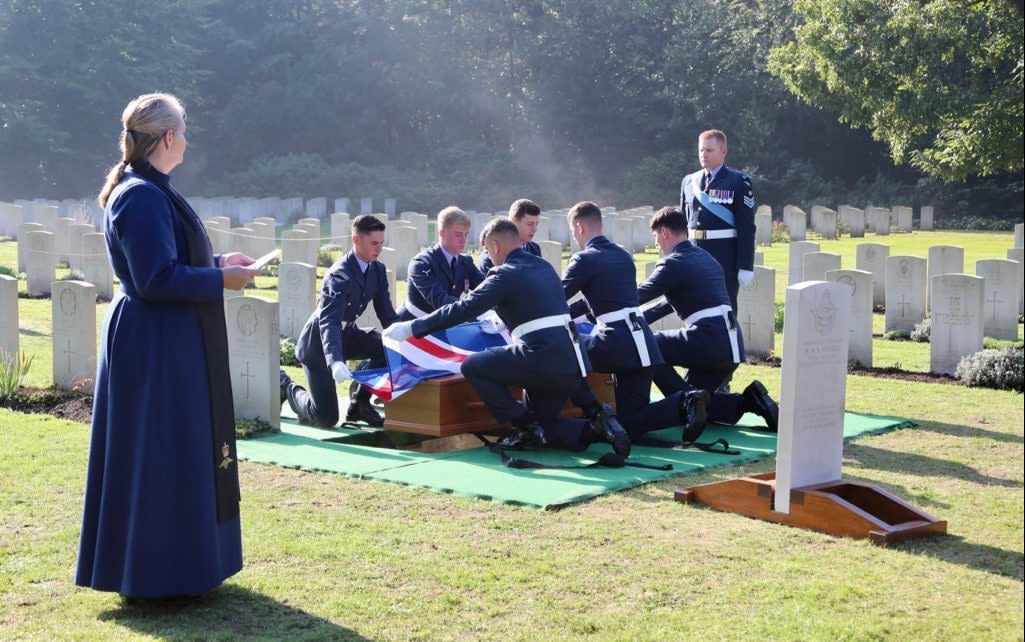Signet ring helps identify RAF pilot buried almost 80 years after going missing in action

The discovery of a signet ring helped identify the remains of a Second World War RAF fighter pilot, who was buried with full military honours on Thursday.
Flight Sergeant William Hurrell’s burial at Jonkerbos War Cemetery in the Netherlands came 78 years after he was reported missing in action in September 1944.
Investigators found a signet ring bearing his initials at the site of an RAF Typhoon’s crash landing the following year – but it was not until November 2019 that his remains were unearthed from the plane’s wreckage by Dutch army excavators.
Brydie Hurrell, William's great-niece, said the recovery and identification of the remains had brought the family "closure".
She said: "Bill's parents and his brother, my grandfather, died never knowing where he was, but we now have closure for them and for ourselves."

Personnel from the RAF’s Queen’s Colour Squadron carried the Union flag-draped coffin as family members who had travelled from Australia watched on.
The ceremony was postponed for more than two years because strict lockdown travel restrictions prevented them from leaving the country.
FS Hurrell, from Morpeth, Northumberland, was just 21 when he failed to return from a six-plane armed reconnaissance mission that had been intercepted by up to 60 Luftwaffe fighters.
It was the penultimate day of Operation Market Garden, the major Allied operation to push through German lines and acquire a bridgehead over the Rhine.
Eyewitnesses saw an aircraft crash in farmland 14 miles north of Arnhem, and in a search the next morning found its wreckage submerged by groundwater in a deep crater.
'No need for any DNA test'
A post-war investigation concluded it was probably the place where FS Hurrell crashed after finding the ring and parts of his Typhoon aircraft.
Dutch military specialists confirmed that suspicion in 2019 by identifying markings on what remained of the aircraft's fuselage and comparing the human remains to details contained in FS Hurrell’s RAF health records.
Captain Geert Jonker, a commanding officer of the Royal Netherlands Army’s recovery and identification unit, said: “There was no need for any DNA test because this is considered conclusive evidence.”
The Dutch army is the only military in western Europe with a specialist team responsible for investigating Second World War air crashes.

 Yahoo Movies
Yahoo Movies 
